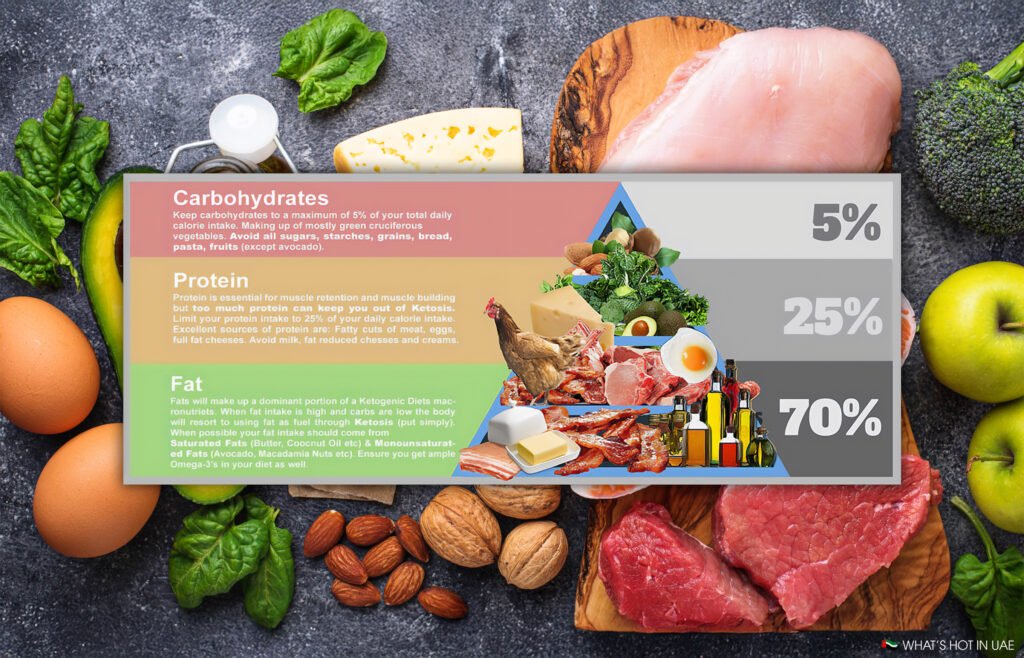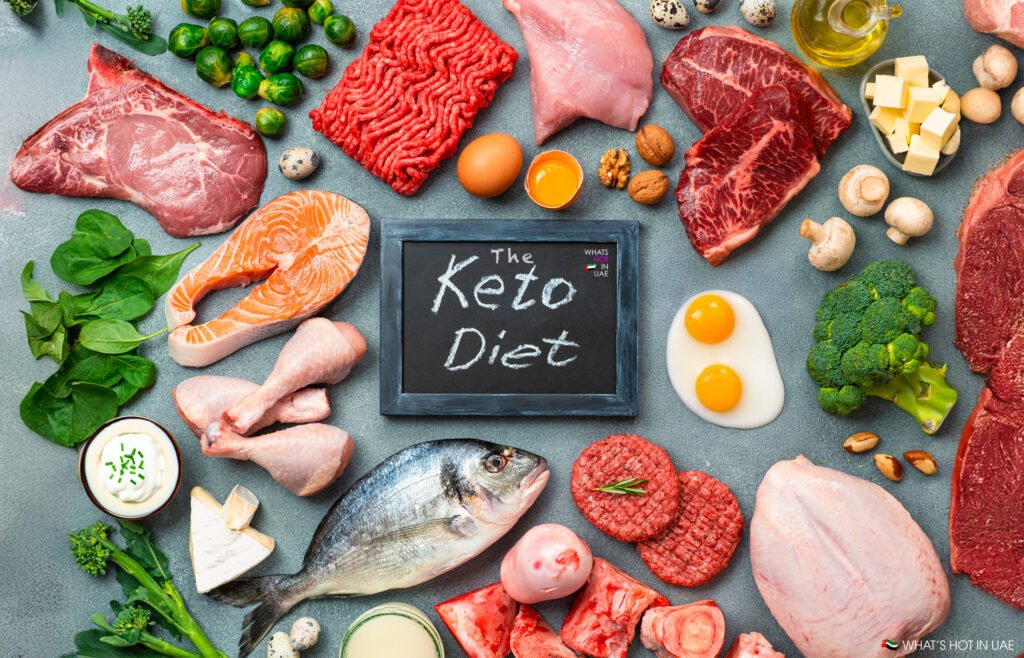The keto diet has been one of the most polarising health conversations of the past decade. For some, it’s a miracle solution that curbs appetite, stabilises blood sugar, and sheds stubborn fat. For others, it feels restrictive, unsustainable, and perhaps even outdated in a world that has moved on to intermittent fasting, plant-forward eating, and weight-loss injections. But does the keto diet still work in 2025? Can this nearly century-old eating method adapt to modern lifestyles, or is it destined to fade into the background of diet history? After speaking to medical professionals, nutritionists, and functional medicine experts, a clear picture emerges: keto still works, but it has changed.
The Surprising Origins of the Keto Diet
Few realise the keto diet wasn’t designed as a weight-loss fad. It was developed in the 1920s at the Mayo Clinic to help children with epilepsy. Doctors found that patients eating very few carbohydrates and relying on fat for energy experienced fewer seizures. This medical breakthrough turned keto into a therapeutic tool for decades.
It wasn’t until the low-carb revolution of the 1990s and 2000s, led by the Atkins diet, that keto began to take on new life. By 2017, social media turned it into a phenomenon, with hashtags, influencers, and recipes filling Instagram feeds. In 2020 and 2021, Today’s Dietitian ranked keto among the most popular diets in the United States. In Dubai, gyms and wellness centres quickly embraced keto-friendly menus, with cafés offering almond flour bread, bunless burgers, and avocado-based smoothies. This global trend trickled into the UAE, making keto a lifestyle for residents who wanted both weight management and sharper energy levels.
How the Keto Diet Works
The mechanics of keto remain straightforward. Humans usually rely on glucose, produced from carbohydrates, for energy. A 2010 study found the average person consumes 200 to 350 grams of carbohydrates daily. When carbohydrate intake drops below 50 grams, the body begins burning fat instead. This process, ketosis, creates ketones, which fuel the body.
On a standard keto diet, fat accounts for 70 to 80 per cent of intake, protein around 20 per cent, and carbohydrates less than 10 per cent. Dr Eric C. Westman, associate professor of medicine at Duke University, explains: “I teach that protein comes first—that’s what we’re made of. Then, you can run your body on carbohydrates or fat. It’s your choice.”
This shift in metabolism explains why many people report steady energy levels and a noticeable drop in hunger while following the keto diet.

The Benefits of the Keto Diet
Research shows keto can improve metabolic health, aid weight loss, regulate blood sugar, and reduce inflammation. Kristina Hess, a licensed dietitian and nutritionist, compares it to modern weight-loss medication: “Being in ketosis is like natural Ozempic—it’s an appetite suppressant. You’re not hungry, your blood sugar is stable, and you avoid spikes.”
The appetite-control effect is one of the most appealing aspects. A 2020 study in Nature Metabolism confirmed that people in ketosis reported reduced hunger compared to those eating high-carb diets. For many, the keto diet feels sustainable not because of willpower but because the body naturally stops craving excess food.
In the UAE, some fitness coaches promote keto alongside intermittent fasting, highlighting how well the two methods pair for appetite suppression and fat loss. In a city where social events often revolve around dining, this approach appeals to professionals balancing long work hours with active lifestyles.
The Rise of Flexible and Cyclical Keto
Strict keto, however, is difficult for many to sustain. Enter cyclical keto—a flexible version that allows higher-carb days or seasonal variations. Dr Will Cole, a functional medicine practitioner in Pittsburgh, champions this style: “The cyclical ketogenic diet leverages the benefits of keto while avoiding the pitfalls of constant ketosis, like gut microbiome diversity problems. It makes the diet less restrictive and more sustainable.”
Cyclical keto might look like eating strict low-carb meals five days a week, then including clean carbs—like sweet potatoes or quinoa—on two days. Some follow seasonal variations, enjoying berries and fruit during summer while returning to deeper ketosis in winter. In the UAE, chefs have even designed “keto-friendly” tasting menus that rotate with the seasons, a nod to how flexible approaches can keep the diet exciting.
Foods That Work on Keto
The best keto diets centre on whole foods rather than supermarket products branded as “keto-friendly.” Dr Westman warns against packaged goods: “The packaging might say keto, but many of these products are ultra-processed and not what I’d recommend.”
So what does eating on keto actually look like? Experts emphasise building meals around proteins rich in natural fats, such as salmon, lamb, chicken thighs, or eggs. These provide the balance of fat and protein needed to sustain ketosis without leaning on processed snacks. Healthy fats like avocado, olive oil, coconut oil, and nuts add flavour and help maintain energy. Vegetables are encouraged too, particularly leafy greens, courgettes, peppers, and cruciferous choices such as broccoli. Even fruit has its place, with berries being the preferred option due to their low fructose content.
Dr Cole reminds patients not to fear carbs when they come from nutrient-dense whole foods: “The strict type-A keto dieter ends up fearing carbs, but if they’re in whole food form, they shouldn’t. Nutrient density matters more than perfection in ketosis.”
Dubai restaurants have adapted, too. High-end steakhouses now offer keto menus, and cafés highlight chia puddings and cauliflower rice dishes. This accessibility makes it easier for residents to enjoy keto without feeling excluded from the city’s dining scene.

Appetite Suppression and Energy Stability
The keto diet’s biggest strength remains its effect on appetite. Once the body adapts to burning fat, cravings diminish, blood sugar stabilises, and energy remains consistent. This explains why many people can maintain a calorie deficit without conscious restriction.
For busy professionals in the UAE juggling long commutes and late-night social events, that energy stability is a major draw. Unlike crash diets that lead to exhaustion, the keto diet provides steadier focus, making it especially popular with Dubai’s growing fitness community.
Challenges and Criticisms
The keto diet isn’t perfect. Strict versions may reduce gut microbiome diversity and lead to nutrient deficiencies if not balanced with a variety of whole foods. The so-called “keto flu”—fatigue, irritability, and headaches in the early stages—can deter newcomers. Socially, it’s not always easy to skip bread at a family gathering or to explain carb limits at group dinners.
Cardiologists also caution against heavy reliance on processed meats and cheese, which could increase cardiovascular risks if consumed excessively. Still, experts agree that most criticisms stem from poor implementation rather than the diet itself. A keto diet built on fresh fish, leafy greens, and healthy oils looks very different from one centred on bacon and packaged snacks.
Beyond Weight Loss: Keto as a Health Tool
Although often marketed for fat loss, the keto diet continues to attract medical interest for other conditions. Studies are exploring its impact on Alzheimer’s, Parkinson’s, and type 2 diabetes. Research also points to improvements in mental clarity and reduced inflammation, suggesting it could support brain and metabolic health beyond weight management.
In the UAE, doctors are beginning to see patients who blend keto with Mediterranean principles, enjoying olive oil, grilled fish, and fresh vegetables while keeping carbs lower. This hybrid model echoes expert consensus: the future of keto is not about strict rigidity but intelligent flexibility.

Living with Keto in 2025
Few people maintain strict keto permanently. Instead, many adopt hybrid approaches, weaving in intermittent fasting, rotating seasonal foods, or shifting to Mediterranean-style eating after an initial weight-loss phase. Kristina Hess describes it as a mindset shift: “Keto doesn’t have to be rigid rules forever. It can be one tool in a wider toolbox to build metabolic health.”
In Dubai, where wellness trends move quickly, this flexible approach has kept the keto diet alive. Gyms promote keto resets, cafés serve creative low-carb menus, and nutritionists tailor cyclical plans for professionals and athletes alike. The message is clear: the keto diet still works, but the way people use it has evolved.



